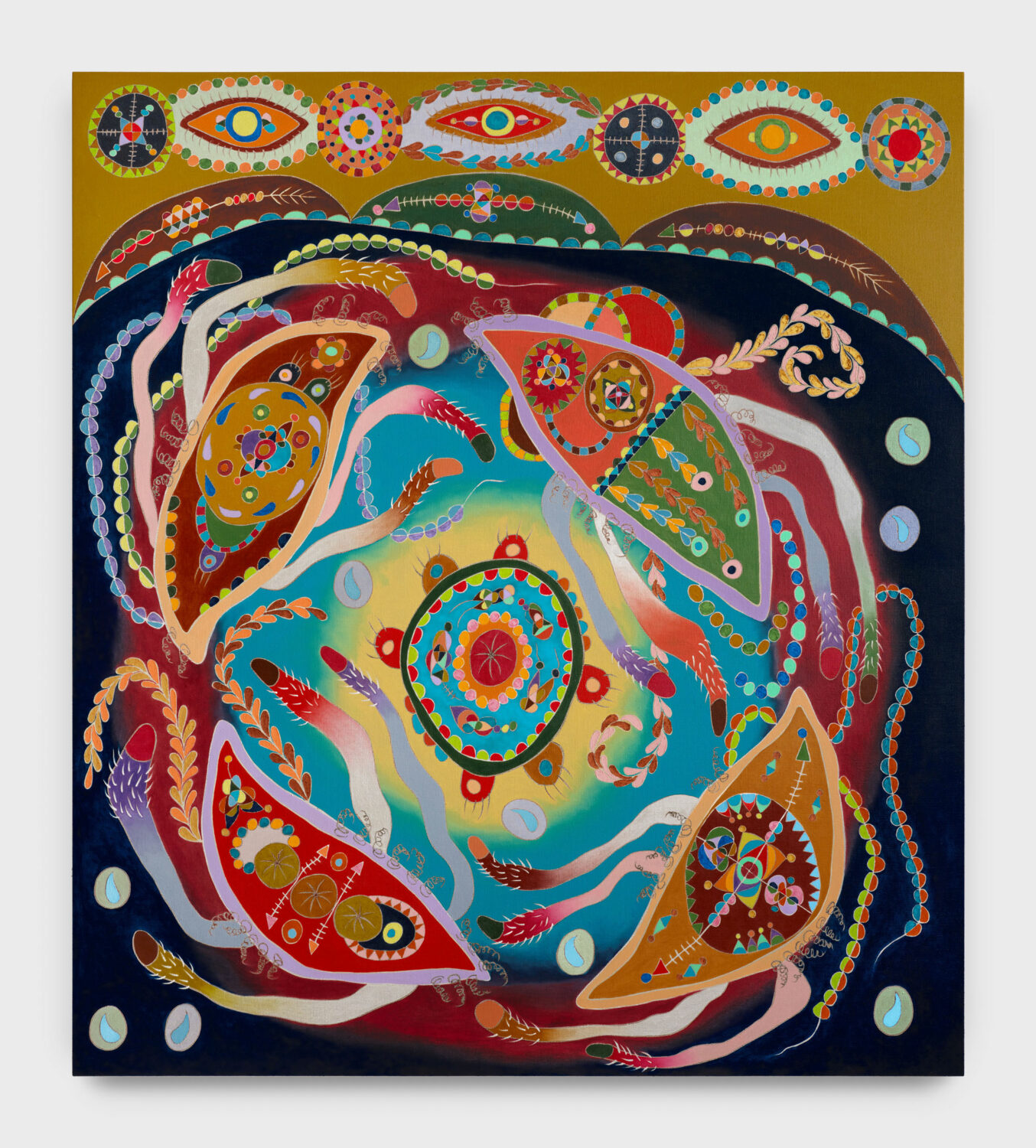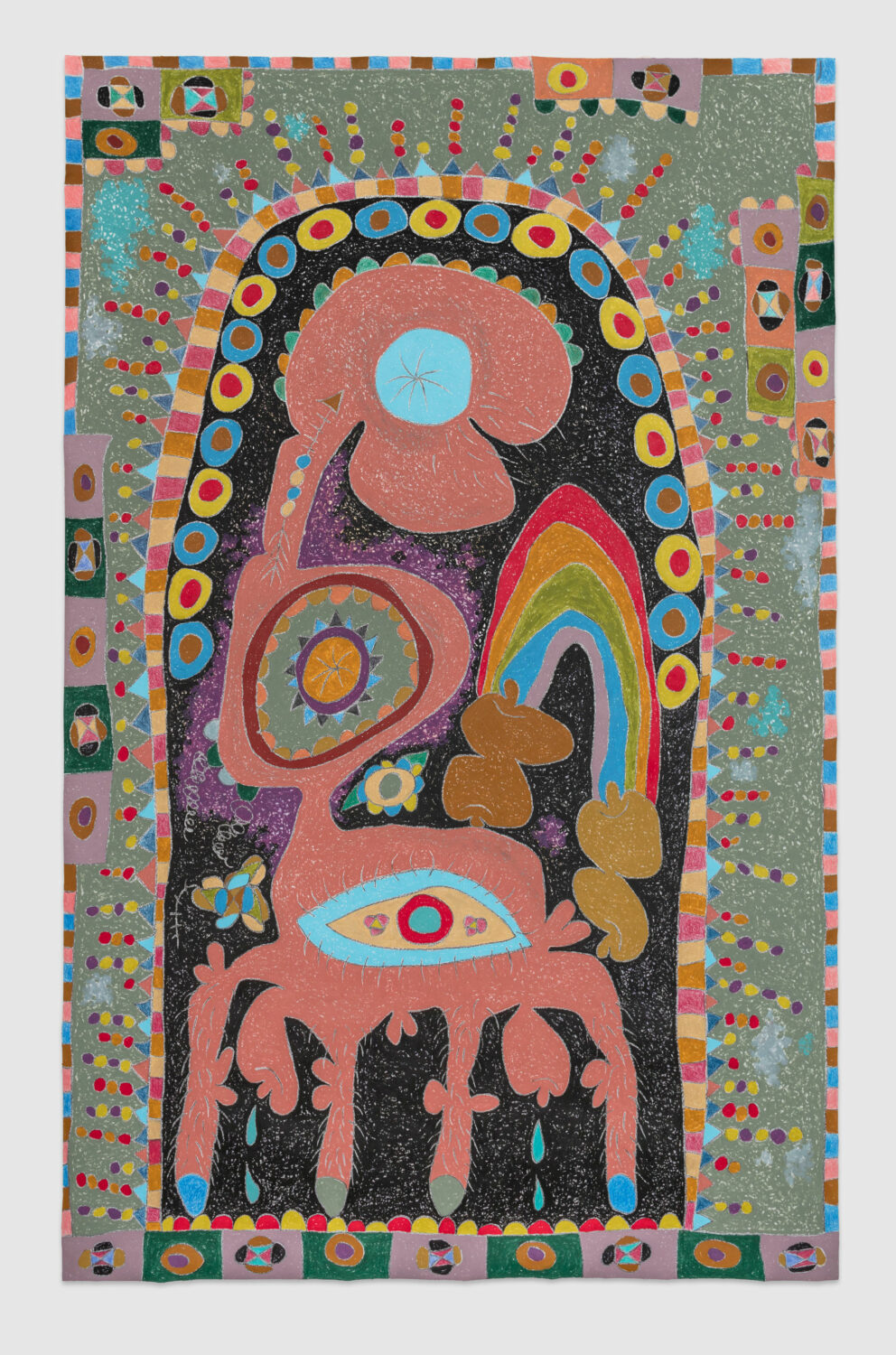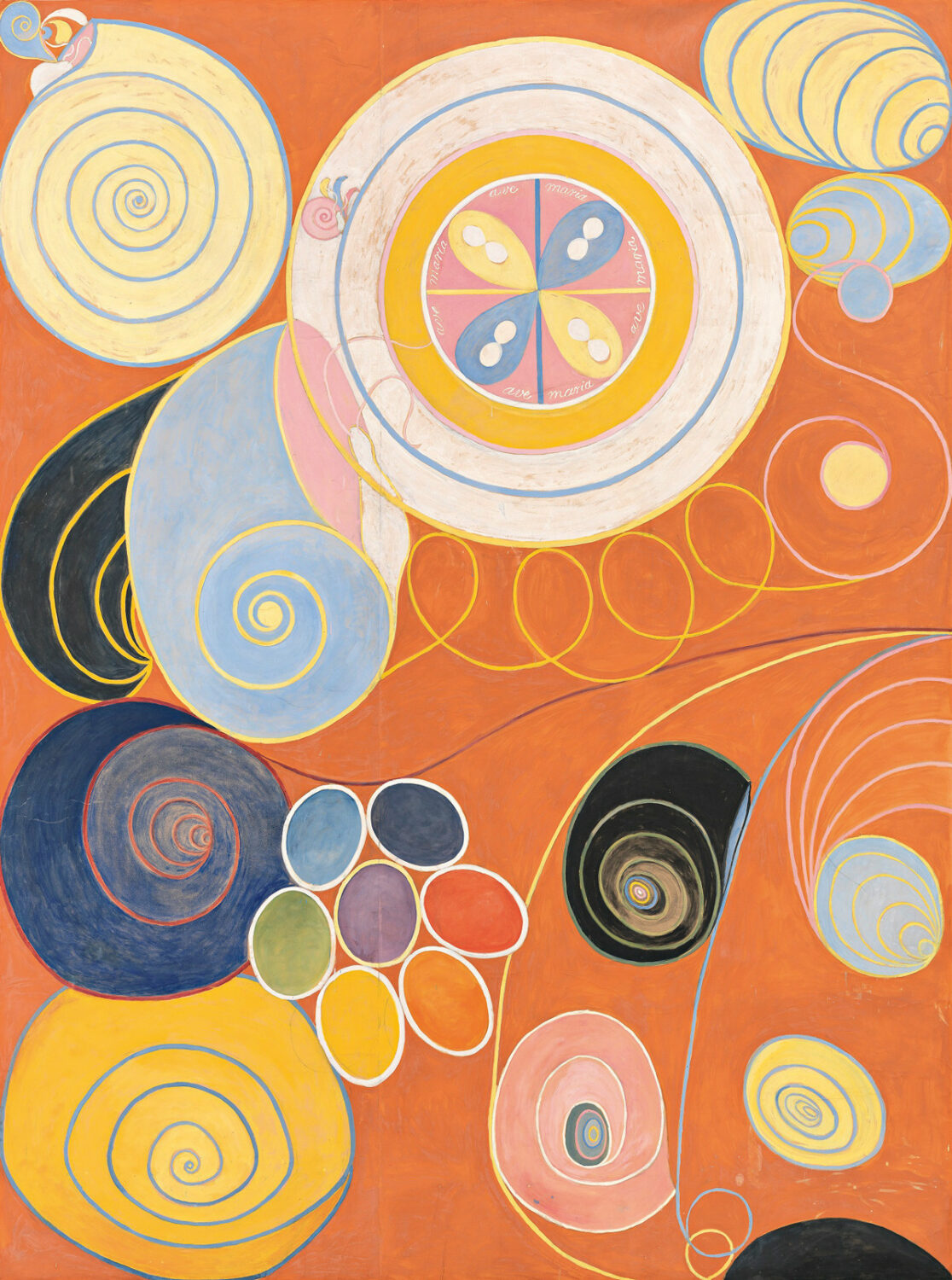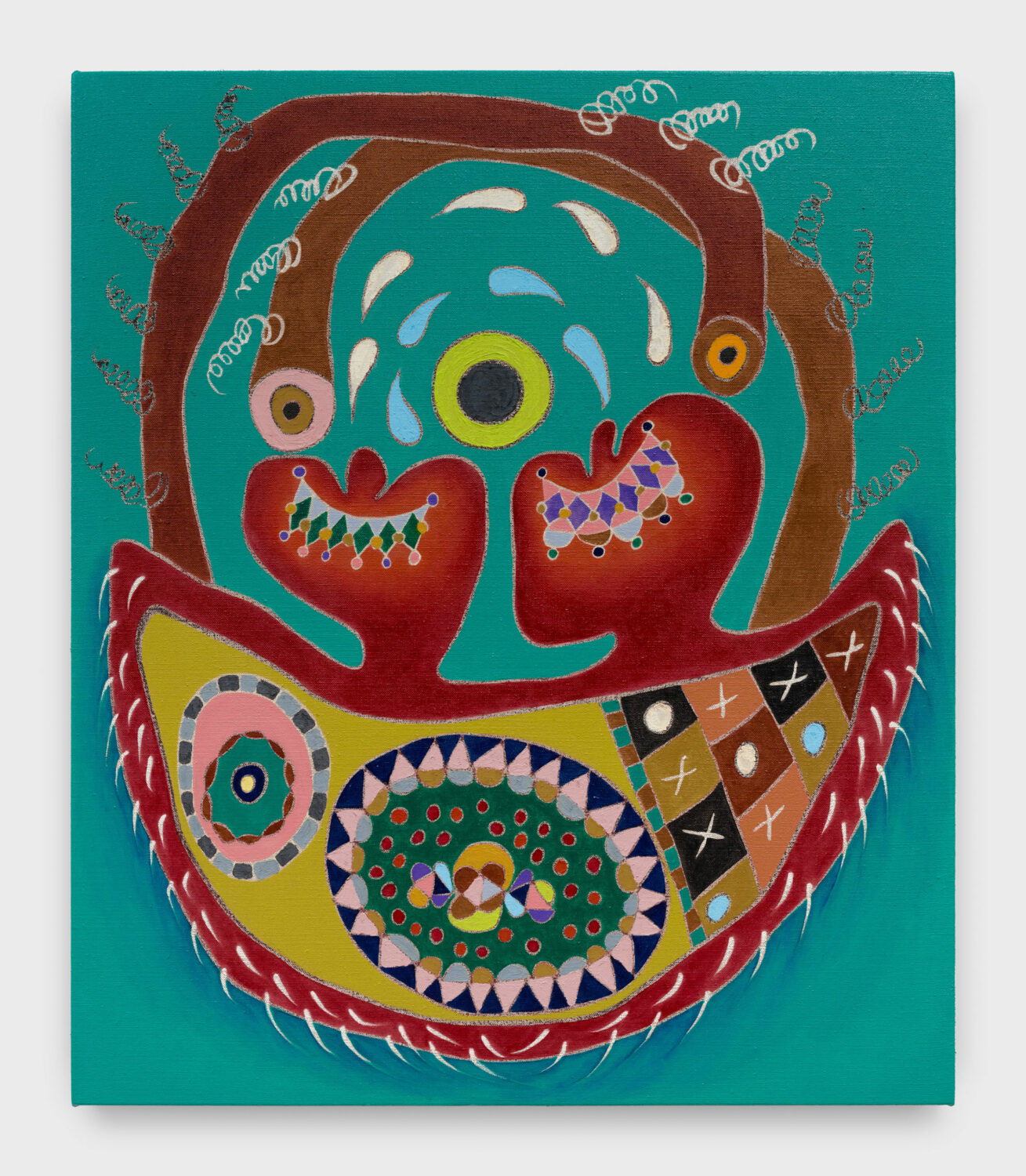Painter Nasim Hantehzadeh On Metamorphosis, Islamic Architecture & Growing Up In Iran
By Something CuratedLos Angeles-based Iranian-American visual artist Nasim Hantehzadeh works in oil, pastel and graphite, across both canvas and paper, bringing together untethered figurative elements in vibrant and arresting compositions that allude to a range of references, including Palaeolithic cave paintings, indigenous art from Mexico and ancient Persian rug designs. Hantehzadeh returned to the United States – their country of birth – after being raised in Iran until early adulthood and their deeply personal works reflect this cultural duality in the hybrid forms that occupy their paintings and drawings. In dismantling preconceptions of a pre-modern Islamic gender system, the artist fortifies their stance on Iranian feminism and the powerful role it plays in their country’s culture wars. Hantehzadeh’s first UK solo exhibition ‘Ray of Light’ is now on show at Pippy Houldsworth Gallery in London until 7 January 2023. Expanding on their practice and the multifarious influences that permeate it, the below are Hantehzadeh’s words.

When I was growing up in Iran, I used to visit historical sites and landmarks as well as ancient mosques and Islamic architectural sites with my family during our vacations to different cities around the country. The cities are imbued with the history of ancient civilisation, something that entered my subconscious and later filtered into my practice.
Visually, my works are celestial, their forms circle the central point of the composition. It is deliberately unclear whether they are moving clockwise or anticlockwise, an intentionally disorienting device since socially and politically, both in Iran and the US, it has been a turbulent time. Which way is time moving? explores this in more depth. Time is a dictator that controls us; we have no choice but to move with it. Even so, sometimes it feels like we are stuck in the past, like with the reversal of reproductive rights in America. Sometimes it feels like we get ahead of ourselves and that too has very real repercussions. I’m thinking about the Westernisation of Iran pre-revolution and the subsequent backwards motion it provoked.

This interest in esotericism finds a Western counterpart in the spiritual abstractions of Hilma af Klint and Agnes Pelton, both of whom became visual and conceptual reference points during the development of the exhibition. In On the night of the full moon, we learned to trust each other I drew the forms as if they were reliant on one another and if any of them moved, the rest would fall apart. I think about the moon as a mystical element in nature that helps balance humans with the natural world and try to apply that thinking process on a social level.

Lee Lozano’s drawings have been influential to my exploration of metamorphosis and gender fluidity. My drawing, The gate is open is a very personal work that examines my relationship to sexuality, gender, and nationality. It’s about vulnerability and the strength it takes to be open, especially in the face of familial and political pressure. It can be difficult to notice your own growth when you’re going through it. Last year was the 10th year commemorates my ten year anniversary of living in the US. It passed me by completely! I didn’t realise until a year later but it helped me to reflect on my journey.

Right now Iran is suspended between its incredible cultural history and legacy, and a very contemporary political situation that I hope will ultimately transform the social landscape of the country. I’ve been following developments in Iran closely and they bring up personal memories of my experience of living there during my childhood and early adulthood. Hugging myself is an important painting for me because it refers to the tension that I go through on a daily basis even though I no longer live in Iran and no longer directly experience the hardships that people in Iran, especially women and LGBTQ people, are subjected to everyday.
Feature image: Nasim Hantehzadeh, Last year was the 10th year, 2022. Image courtesy the artist and Pippy Houldsworth Gallery, London